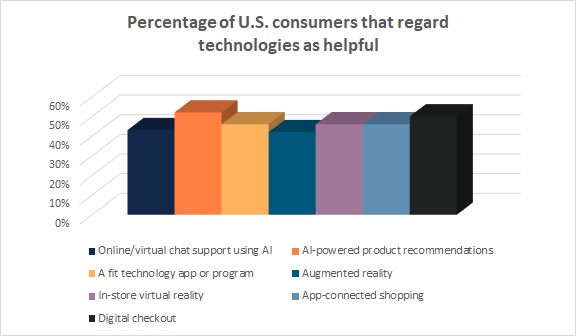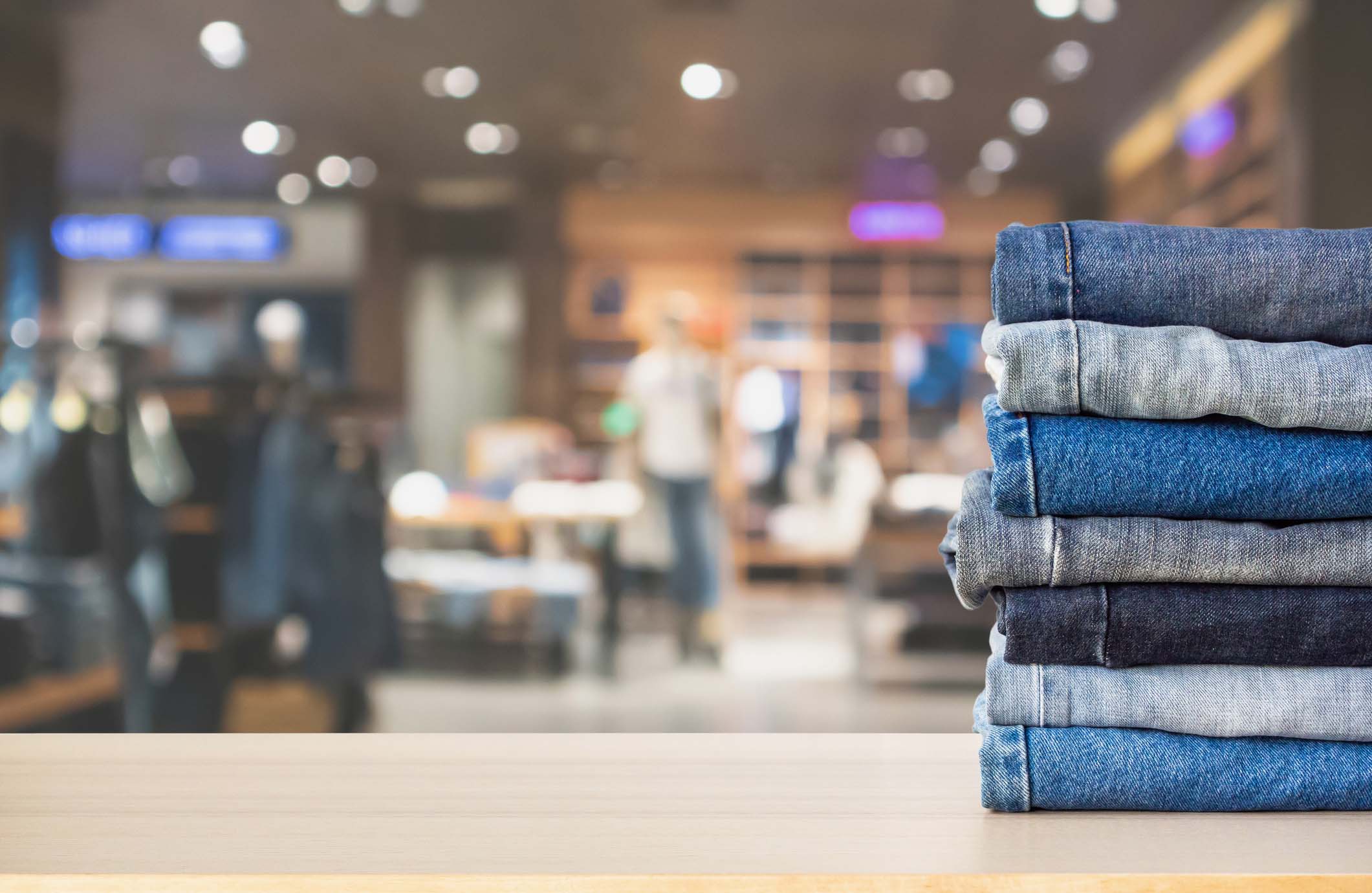The new year is bringing plenty of newness to retail, much of it “behind the scenes” thanks to further adoption of technologies like artificial intelligence (AI), generative AI, and augmented reality (AR), applications that stores anticipate will help them meet ever-evolving customer expectations.
“We know from our research customers are expecting improved experiences,” said Google’s Amy Eschliman, managing director of retail at Google Cloud, during an interview with the Lifestyle Monitor™ at the National Retail Federation’s recent NRF Big Show in New York. “That means more personalization, more seamless customer service experiences — more seamless experiences across the board. AI and generative AI are going to take a much more forward role in 2024.”
“The associate experience is going to be incredibly important in fashion and specialty retail,” Eschliman continued. “We have the ability to readily access product information, the ability to quickly summarize reviews and give information to an associate so they can be more informed and intelligent when they’re working with the customer.”
This year will be about reinforcing the need to have a discreet understanding of your bond with the consumer and your brand promises, and finding ways to amplify that going forward.
Matt Laukaitis, Global General Manager, Consumer Industries, SAP
Today’s customer is here for these new technologies, too. More than half of all U.S. consumers (51 percent) say convenience is a positive of shopping technology, according to Cotton Incorporated’s 2023 Digital Innovations and Willingness to Pay Survey. Another 46 percent say retail tech makes it easier to find the clothing they like, and over one-third (36 percent) say shopping technologies help them save money.
At the Zebra Technologies booth at the NRF Show, Matthew Guiste, global retail technology strategist, said the company had 17 demos in its “Modern Store” exhibit. One demo revealed points on a shopping journey where both store associates and consumers could benefit from using modern technology. For instance, the latest Zebra scanner uses machine vision to detect ticket switching on in-store merchandise. Another high tech tool: RFID, a 20-year-old technology that Guiste says is Zebra’s top request right now as it’s being worked into new applications.
“Lululemon is one of our customers and they first put in RFID for inventory location,” Guiste said during an interview with the Lifestyle Monitor™. “But then they said, we can use this to help with returns. So, if someone brings something back and there’s an RFID code sewn into the item, they know which store and where in that store it came from. And then they saw they could also use it for fitting rooms. So, if I’m in the room and I want to ask for help, the associate knows I brought in one size, but I need a bigger one. All these different use cases start to add up.”
As beneficial as retail tech can be, consumers say it can come with some downsides. For instance, more than half (52 percent) cite technology errors as a problem, according to the 2023 Digital Innovations and Willingness to Pay Survey. Nearly 4 in 10 shoppers (39 percent) believe retail tech will make prices go up and a third (36 percent) say the technologies can be too invasive.
But the tech firms at the NRF Show had plenty of positives to highlight for 2024. For instance, Guiste said a Zebra survey found there is a huge push toward the customer experience and how to make it better.
“You might see that around faster checkouts, where you’re making sure the item they’re looking for is in the store,” Guiste said. “That’s still the number one reason people like or don’t like a store. Another point is working on seamless omnichannel, being more efficient. We’re talking instances where you buy online and return in the store, or you go into the store, and you can’t find what you’re looking for but you can have it efficiently shipped to your home. There’s a way to bring that information to store associates using a Zebra handheld device. And coming this year, associates will also have the ability to use RFID to see which nearby stores have an item a consumer can’t find in one particular location.”
Zebra demonstrated a handheld RFID scanner that can be swiped over a shelf or display to easily tell salesfloor associates which items need to be replenished. That employee can send a notification from the handheld device to the stock room, where an associate receives the notification on a wristwatch-style wearable. They can respond using voice, while they remain hands-free to collect the merchandise. Back on the salesfloor, the same mobile scanner can also be used to complete the checkout transaction through Zebra Pay.
As it stands, 50 percent of consumers find in-store technologies like digital checkout “very helpful,” according to the 2023 Digital Innovations and Willingness to Pay Survey. Another 46 percent appreciate app-connected shopping and 42 percent say in-store virtual reality (VR) is very helpful.

Consumers who like in-store VR might appreciate ZERO10’s augmented reality try-on mirror, which was part of the NRF Innovation Lab at the Big Show. The genuinely fun mirror demonstrated how existing digital screens in brick-and-mortar locations can be turned into AR mirrors that bring an engaging and interactive retail experience in store. NRF attendees needed only to stand in front of the mirror and suddenly a clothing item – say, a red Tommy Hilfiger puffer jacket – would appear in the correct size on the wearer. As the attendee moved, the clothing would move, as well. Such mirrors could be placed within a retail location to allow try-on without using a dressing room, or in window displays to attract more in-store footfall.
SAP’s Matt Laukaitis, global general manager, consumer industries, said in an interview with the Lifestyle Monitor™ at the NRF Show that heading into 2024, retailers will be looking at continuing the experience between online and offline.
“When you get the interaction correct, you as a retailer don’t get massive returns and you’re providing a greater service to the consumer,” Laukaitis said. “A lot of consumers want to have the same experience online as in store. Providing that will help avoid things like wardrobing, where customers buy multiple items with the intention of returning it.
Retailers might use AI chatbots to help make these consumer connections. Currently nearly 6 in 10 shoppers (56 percent) are comfortable with AI chatbots, going so far as to say they’re “pretty cool,” according to the 2023 Cotton Incorporated Lifestyle Monitor™ Survey. With such acceptance, retailers can use this type of generative AI to their favor.
“Some of the smartest retailers we’re seeing are actually giving incentives to online customers to come into the store so they can have that personal engagement with the staff at the store,” Laukaitis said. “This year will be about reinforcing the need to have a discreet understanding of your bond with the consumer and your brand promises, and finding ways to amplify that going forward. SAP is doing a lot of investments around helping brands make a better connection with those customers. It’s about understanding where the consumer is and how she’s shopping, how she’s influenced to shop and then finding better ways to have that as part of the seamless view of that customer within the system that recommends things.”
